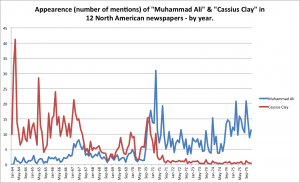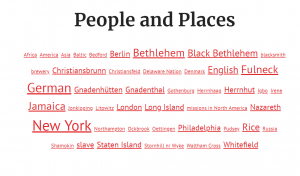After analyzing several digital humanities projects, I have come to see the importance of DH. Digital humanities brings texts and other humanity studies to life, providing a new way study more words than ever before possible. Perhaps the best part: digital humanities makes these works available to EVERYONE, not just scholars. This is a huge deal; even some scholars struggle to access archives because of their demanding requirements. With methods like visualization and mapping, scholars have been able to make humanities more interesting and easier to study for the masses.
Although digital humanities come with several benefits, there are still many skeptics/objectors. Many people, oftentimes scholars, argue that digitizing these works takes away its essence, the beauty of analyzing them in person. They point out that moment of serendipity that comes with analyzing a 200 year old map or reliving a pioneer’s life through the same journal they’d record their thoughts and feelings in. Many people also feel that the elements of DH can take the meaning away from a document. For instance, it could be argued that visualization distracts from the true meaning of its work, making the reader analyze vast amounts of information when they should instead be studying every word, contemplating its meaning.
For me, digital humanities is just like anything else in modern society, a product of evolution. In a world that is constantly improving, it is not surprising to see the digitization of archives. This “Age of Technology” that the world is going through mainly centralizes around one idea: convenience. DH is convenient. Instead of searching for an archive, traveling to it, gaining admittance, searching for materials, and then trying to study materials that are more often then not too worn down from use over time to even read, you can simply open your laptop and go online and study virtually anything. In my opinion, all scholars should really be embracing Digital Humanities. I understand the reliance and comfortability with traditional ways of studying archival materials, but the digitization of these materials has made them more available to the world, making the scholar’s job more efficient and sometimes providing them with jobs. Although, yes, I’m sure falling in love with a historical document in person, being able to touch it, is an ethereal experience, DH provides new ways to fall in love with humanities. Whether it be seeing a document or study in a new perspective because of visualization 0r being able to better understand the travel patterns of a specific group because of mapping, digital humanities is packed full of information that can inspire.
As with anything, digital humanities comes with its pros and cons. Although the world is shifting away from tradition, away from the physical and more towards the digital, these works are still valued and loved. There must be an understanding that the way we study the humanities must evolve with society or they will become irrelevant and forgotten. In a world that is moving ever-so-rapidly, the benefit of having these archives just a few clicks away at the tips of your fingers is a huge accomplishment in the world of humanities. The blend of a modern study with a classical one is something that needs to happen more often and hopefully will because of the example that DH sets.
Ethan Conklin is from a suburb outside Pittsburgh, Pennsylvania. He is currently pursuing a B.A. in Spanish and Anthropology at Bucknell University. Ethan hopes to attend law school after finishing his undergraduate studies and is excited to see what the future holds.







